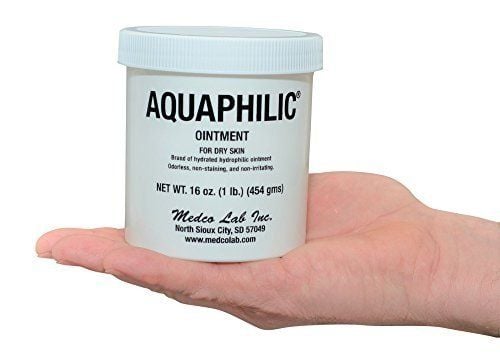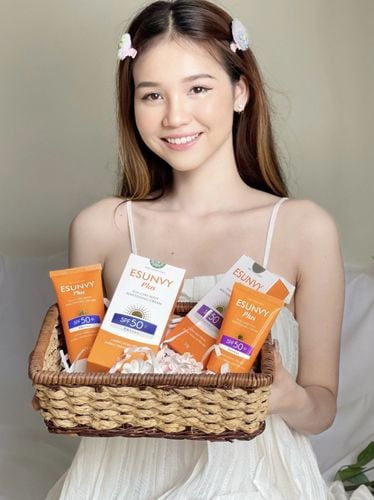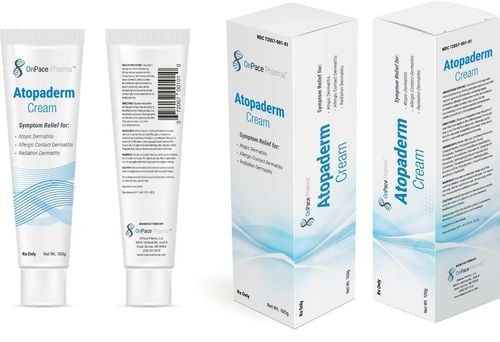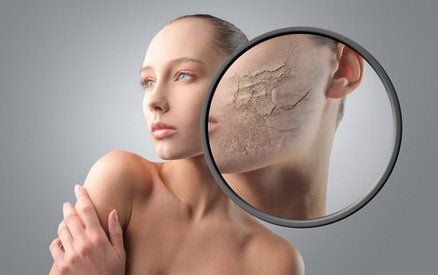This is an automatically translated article.
Understanding the effects of sunlight on the skin has influenced advancements in sunscreen formulation and manufacturing technology, becoming more complex and more complete. Accordingly, choosing the most suitable sunscreen product will depend on many factors such as how sensitive your skin is to cosmetics, dry or oily skin, a history of previous skin cancer as well as other factors. parameters on the product, the important thing is how much spf in the sunscreen is needed.1. What is the role of sunscreen?
Before we can dive into the details of a sunscreen's SPF rating, the first step is to understand the basics of sunscreen.The sun is the source of two types of UV rays that are especially harmful to human skin, UVA and UVB. UVA rays penetrate deep into the skin, causing long-term damage such as aging and wrinkles. On the other hand, UVB rays are shorter than UVA rays. They burn the surface of the skin, causing immediate damage like sunburn and skin cancer in the long run.
Accordingly, sunscreen has been designed to protect the skin from the harmful rays of the sun. The mechanism of action of sunscreens manifests itself in a variety of ways, including absorption and inactivation, attenuation and reflection of rays.
2. What is SPF?
Despite the fact that very few consumers know what it is, the meaning of a sunscreen's SPF is actually quite simple. SPF stands for "Sun Protection Factor" and is a measure of a sunscreen's ability to protect against UVB rays. The basic calculation of sunscreen workability is as follows: “If it takes 1 minute for unprotected skin to begin to redden in the sun, using a sunscreen with SPF 15 in terms of It would theoretically prevent skin reactions like this for 15 times longer.”Accordingly, suppose a person uses a sunscreen with an SPF of 30. If it usually takes 10 minutes until the skin starts to feel a burning sensation when out in the sun, by using SPF 30 sunscreen, the skin should theoretically be protected from the sun for 300 minutes. or 5 hours.
However, it's important to remember that the SPF number is only indicative of this product's ability to protect against UVB rays; These are the rays that cause “redness” or superficial burns. In contrast, the SPF factor is completely disregarded for UVA rays; These are the rays that cause long-term damage to the skin, including skin aging and wrinkle formation. Indeed, UVA rays can already do a lot of damage before the skin starts to redden. In fact, 1 in 5 Americans develops skin cancer in their 70s — and many of them are caused by UVA rays.
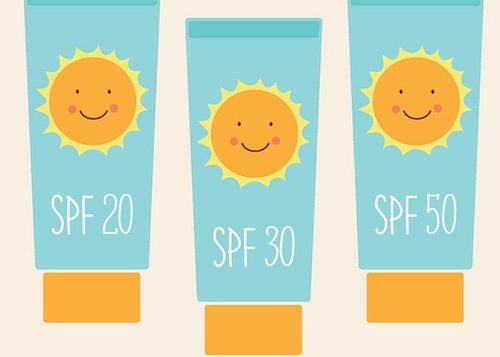
Chỉ số SPF là thước đo khả năng bảo vệ làn da khỏi tia UV
3. How should SPF sunscreen be used?
As a general rule, a sunscreen with an SPF of less than 15 is considered mild protection, SPF 15-30 is considered moderate protection, and SPF 30 or higher is considered moderate protection. high guard.Of these three levels, it's safe for the average user to use SPF 30 sunscreen, as long as it's applied in adequate amounts and reapplied regularly — but that's not a universal rule. Determining which sunscreen is right for you depends on your skin tone. Since a sunscreen with SPF 15 filters out about 93% of all UVB rays that reach the skin, SPF 30 filters out 97%, and SPF 50 filters out 98%, these differences may seem insignificant. However, for someone who is sensitive to light or has a history of skin cancer, those additional percentages make a significant difference.
A common assumption about SPF is that higher means more protection from the sun. If used exactly as directed in a controlled environment, such as a laboratory with a good climate, the amount of UVB exposure is stable and no other external factors affect its performance. , this assumption is absolutely correct. However, people are very unlikely to always remain in such an “ideal” environment. Moreover, other factors such as sweating and exposure to water such as swimming and bathing will reduce the effectiveness of SPF. This is exactly why most experts warn that in reality, no sunscreen can last longer than 2 hours.
4. What is a broad spectrum sunscreen?
As mentioned, SPF really only refers to protection against UVB rays — but it's not the only rays that can damage skin. Meanwhile, UVA rays also cause long-term damage to the skin such as skin aging and wrinkle formation, and can do a lot of damage before the skin starts to feel burned. The reality of sunscreens that protection from UVB rays alone is not enough, this is where broad-spectrum sunscreens come in.Sunscreen is said to be “broad spectrum” when it is able to block both UVA and UVB rays. And, to be honest, this is the obvious imperative. For a sunscreen to be considered "broad spectrum", its UVA protection must be matched by its UVB protection. As the SPF, or UVB protection, increases, the UVA protection must also increase commensurately. So, this is also an important factor to keep in mind when choosing to buy a sunscreen, instead of simply considering it based on SPF.
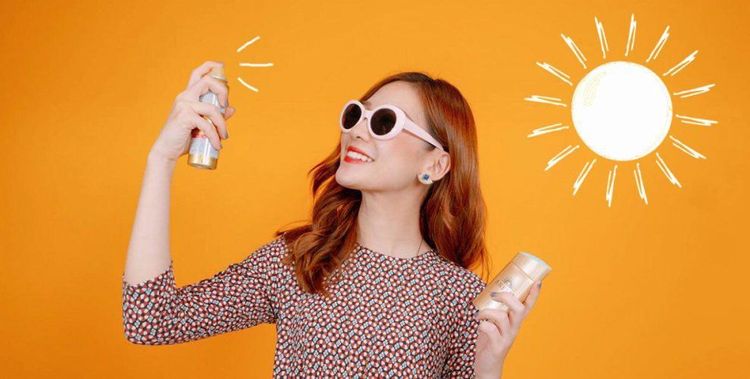
Chỉ số SPF trong kem chống nắng thường dao động từ 15 đến 30 SPF
5. How to use sunscreen?
The first thing to remember when applying sunscreen is that most people tend to under-apply. Experts estimate most people use only 25% to 50% of the recommended amount of sunscreen at a time.Moreover, there are some areas of the skin that are often exposed to strong sunlight but are easily overlooked such as the neck, ears, nose, lips and feet. Also, if using a spray sunscreen, reapplying may not make it any simpler. In practice, the use of spray sunscreen is much more difficult to control, as the amount of cream is mainly covered in a very thin layer like a film on the skin's surface instead of being absorbed into the skin; At the same time, the incorrect application of sunscreen or the ingredients that act as propellants in the spray can make the skin more susceptible to sensitization.
The next thing is that applying sunscreen just once is not enough. Dermatologists always recommend reapplying sunscreen every 90 minutes if you're still outdoors. Besides, if you are doing a lot of physical activity, sweating, swimming or drying with a towel, you must also reapply sunscreen immediately.
On the other hand, remember that sunscreen is not only mandatory on sunny days. Whether the weather is sunny or cloudy, sunscreen is an important part of everyone's daily skin care routine.
Finally, although quality sunscreen and suitable clothing can protect skin from sun damage, people should also avoid working outside during peak daytime hours. Find shade between 10 a.m. and 4 p.m. - when the sun is at its peak and skin damage is more likely, especially in people with sensitive skin. Even in the winter, when it's cloudy and sunny, sun protection is still very important. And users should also protect themselves indoors and when driving because the sun can pass through the windows. In the car, transparent insulating films can block the sun's rays; At home, curtains should be drawn during peak sunlight hours to limit the amount of UV rays that can enter the house.
In a nutshell, the labels on sunscreen products contain key information that helps users evaluate their effectiveness. In particular, the sun protection index SPF , a number that reflects the ability of a sunscreen to protect the skin from the rays that cause sunburn is often the top concern. In addition, the selection of sunscreen is also based on other criteria such as broad-spectrum protection against rays that cause premature skin aging and water resistance for a certain period of time to effectively protect the skin. most comprehensive.
Please dial HOTLINE for more information or register for an appointment HERE. Download MyVinmec app to make appointments faster and to manage your bookings easily.
Reference sources: colorescience.com, healthline.com



